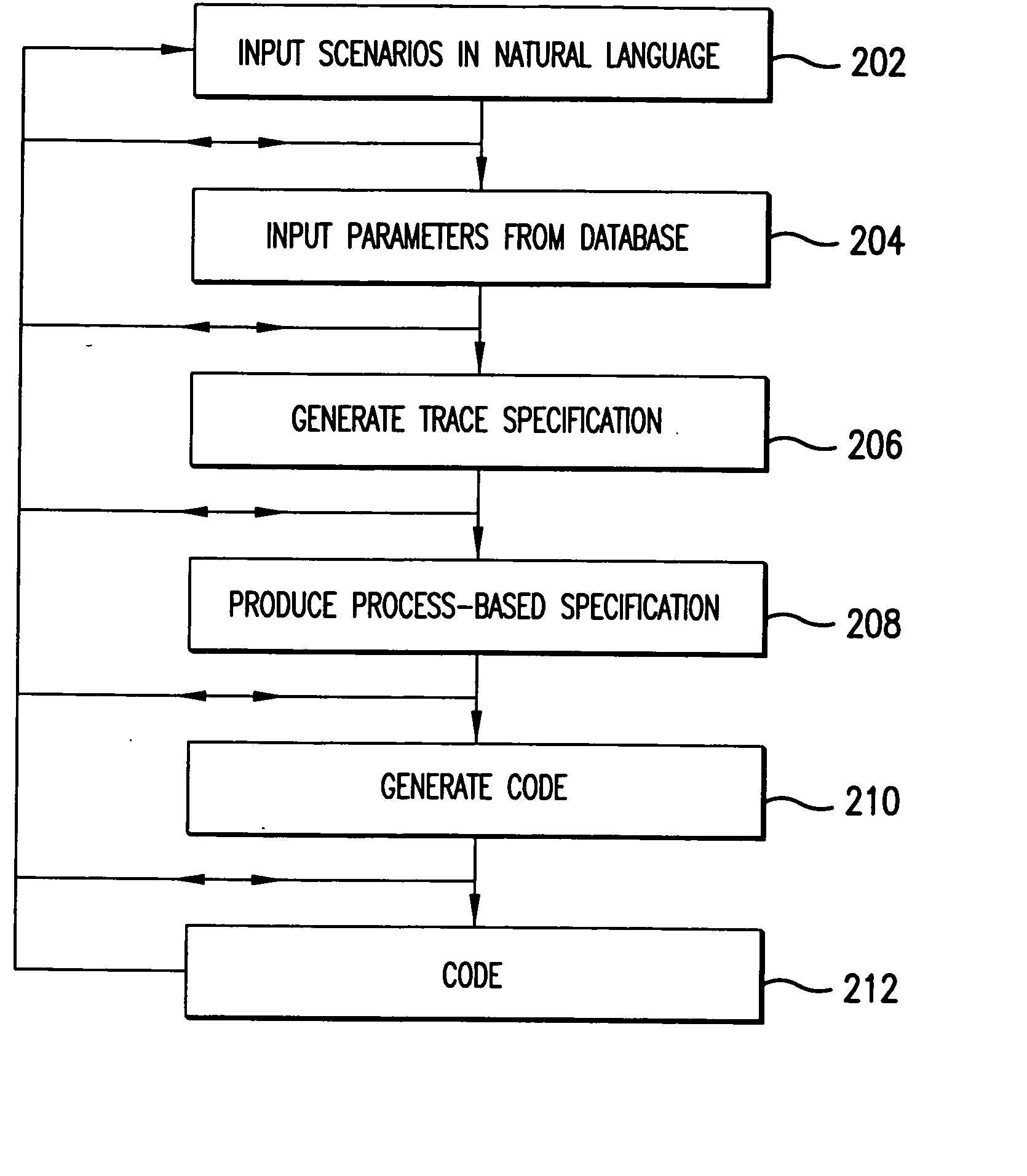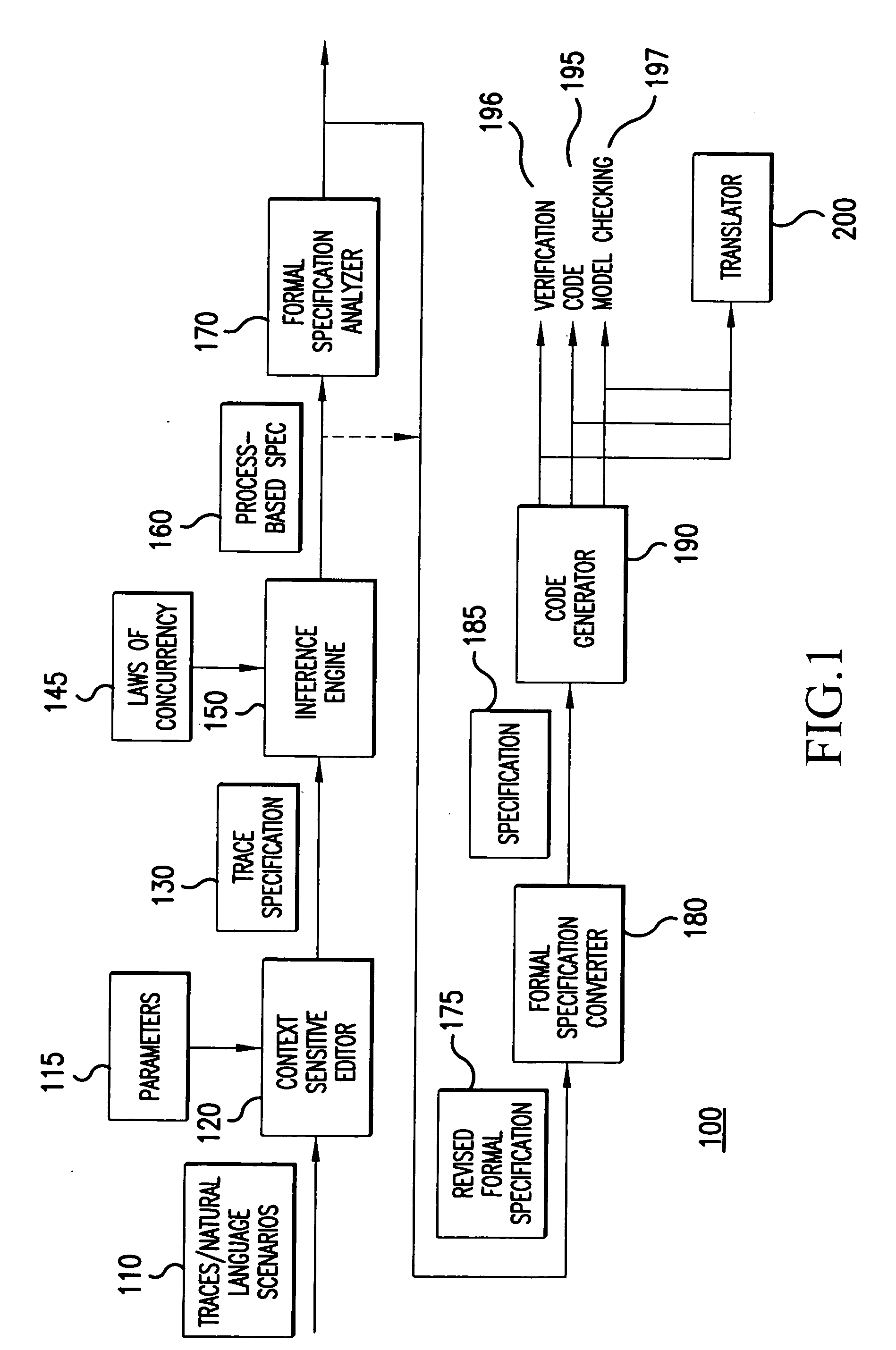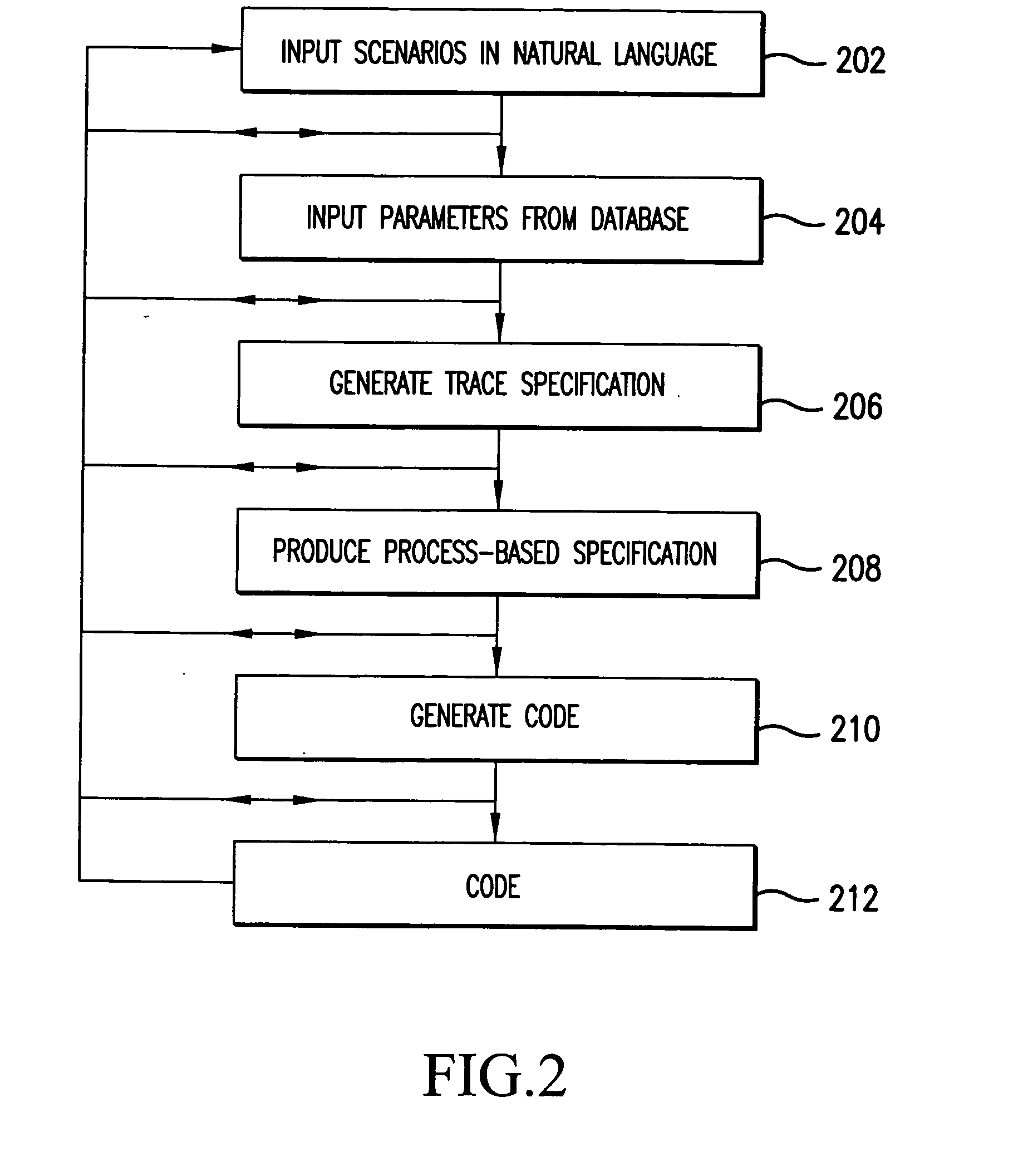System and method for deriving a process-based specification
a process-based specification and process technology, applied in software design, source code generation, instruments, etc., can solve problems such as difficult to determine, complex software and hardware systems, and difficulty in determining, and achieve available techniques for formally specifying software and hardwar
- Summary
- Abstract
- Description
- Claims
- Application Information
AI Technical Summary
Benefits of technology
Problems solved by technology
Method used
Image
Examples
example 1
OF THE DISCLOSED EMBODIMENTS
[0043] If the Spacecraft Monitoring Agent receives a “fault” advisory from the spacecraft
[0044] The agent sends the fault to the Fault Resolution Agent
[0045] OR
[0046] If the Spacecraft Monitoring Agent receives engineering data from the spacecraft
[0047] The agent will send the data to the Trending Agent
[0048] The software system uses agents as surrogates for human spacecraft controllers. In Example 1, the natural language scenario specifies that, when the agent receives a spacecraft fault, it will then send it on to a fault resolution agent that will analyze it for possible actions to take. The natural language scenario also states that if the agent receives engineering data from the spacecraft, it will send it to a trending agent.
[0049] Step 204 executes by inputting domain parameters from a database. The database of parameters includes domain specific terms to help define the scenarios. Such databases are developed for specific domains and inputte...
example 2
OF THE DISCLOSED EMBODIMENTS
[0051] inSCMA?fault from Spacecraft
[0052] then outSCMA! to FRA
[0053] else
[0054] inengSCMA!data from Spacecraft
[0055] then outengSCMA!data to TREND
[0056] Example 3 of the disclosed embodiments below discloses the traces of the specification derived from the structured text.
example 3
OF THE DISCLOSED EMBODIMENTS
[0057] 1. tSCMA{, }
[0058] 2. +{,}
[0059] Step 208 executes by producing the process-based formal specification from the traces. Example 4 of the disclosed embodiments discloses the formal specification produced from the traces. Also, following Step 208, error checking and trouble-shooting may occur.
PUM
 Login to View More
Login to View More Abstract
Description
Claims
Application Information
 Login to View More
Login to View More - R&D
- Intellectual Property
- Life Sciences
- Materials
- Tech Scout
- Unparalleled Data Quality
- Higher Quality Content
- 60% Fewer Hallucinations
Browse by: Latest US Patents, China's latest patents, Technical Efficacy Thesaurus, Application Domain, Technology Topic, Popular Technical Reports.
© 2025 PatSnap. All rights reserved.Legal|Privacy policy|Modern Slavery Act Transparency Statement|Sitemap|About US| Contact US: help@patsnap.com



